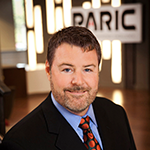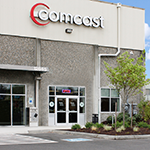
Don’t confuse the Goddard School witha day care; the franchise differentiates itself through its educational programming. “The one area that truly sets us apart from other franchised child care is our playful learning curriculum,” says Joe Schumacher, CEO of Goddard Systems, Inc. (GSI). This approach has been thoroughly tested over the course of the company’s 25-year history and its more than 400 franchised schools throughout the United States, and its Goddard School remains the number one child-care-education system in the country.
But, while GSI’s past accomplishments draw new franchisees, it’s the company’s vigilant control of its growth plan that protects its integrity. “Growing the system does not mean compromising the quality of franchisees or school sites,” Schumacher says. GSI may be a business, but it’s one dealing with something precious: children. So, in the coming years, the company hopes to expand steadily through “reasonable and responsible growth.” To that end, GSI has set a five-year development goal of awarding 60 new franchise agreements and opening 30 new schools per year until 2019, each one tailored to the Goddard School’s particular teaching philosophies.
“It’s hard to grow if you don’t have set goals,” Schumacher says, referring to “goals” in both the quantitative and qualitative sense. With 413 locations already, GSI has a strong foundation in place in terms of not only development but also operational support, training, health and safety, quality assurance, marketing, and IT. So, when determining where to expand, the company will use its 25 years of infrastructure and experience—along with market-data analytics—to strategically assess and target potential new sites.
Goddard Systems
By the Numbers
37
years that Schumacher has been in franchising
26
years that Goddard Systems, Inc. has been in business
17
approximate number of people in GSI’s sales, construction, real estate, and financing departments
413
number of GSI schools throughout the nation (at press time) 8,000 typical square footage of a Goddard School
135–140
approximate number of full-time equivalent students per school
In its traditional suburban growth model, GSI generally requires 1.25–1.5 acres of land for its 8,000-square-foot prototype school building. In dense urban settings, it considers existing structures between 8,000 and 10,000 square feet to retrofit into schools. “Our sites have good visibility, ease of ingress [and] egress, and are situated in well-trafficked and densely populated areas,” Schumacher says. “They should have supporting demographics consisting of a large population of children under the age of five, high median family income, and a desirable median age in a three- to five-mile radius. We consider sites in residential communities, general business areas, and corporate campuses.”
Another key differentiator of the Goddard School program is its dual management system. Each new GSI location will be managed on-site by a franchisee and an educational director. Directors must be approved by both the state and GSI, and they’re responsible for working with teachers and implementing the curriculum. This combined with GSI’s dual focus on education and play is what continues to draw families to Goddard Schools.
“When compared to academically based preschool programs, children in play-based programs outperform the other group socially and academically by the time they reach the fourth grade,” says Kyle D. Pruett, MD, a member of the Goddard School Educational Advisory Board and a clinical professor of Child Psychiatry at the Yale School of Medicine.
Each location is specifically designed with educational play in mind. The Goddard School’s proprietary FLEX (Fun Learning Experiences) Learning Program is meant to teach and reinforce basic subjects such as reading and math while also helping to develop and encourage positive social behaviors such as communication, critical thinking, creativity, and collaboration. Goddard School faculty members create their own lesson plans that enable child-centered learning and advance the cognitive and social development of each child through fun activities. The pursuit of knowledge through play fosters a lifelong love of learning and creates meaningful bonds at an early age.

The FLEX program also emphasizes the importance of an optimal learning environment, not only in terms of classroom management but also the physical makeup of the room. Toys and equipment are carefully chosen: “Our first priority is safety,” Schumacher says. “Optimally, all toys in the Goddard School serve the purpose of stimulating young minds and helping children develop skills.” Areas called “interest centers” are designed to encourage movement and keep children from being confined to one area during the day. “Studies show that a child’s capacity for learning is greater when they are exposed to various settings,” Schumacher says. A typical classroom in the Goddard School contains the following interest centers: language and literacy, science and technology, mathematical thinking, physical development, social studies, and creative expression.
Franchisees are held to high standards with regard to health, safety, education, and quality assurance. “This is a community-based business, and it’s important to know that our franchisees are on-site operators,” Schumacher says. “This creates not only a stronger bond with parents and students but also adds an extra layer of accountability for franchisees.”
Every year, the company updates its five-year plan for the future while remaining focused on the present. The importance of continual learning is the foundation of the Goddard School’s play-based education program, and GSI practices what it teaches, seeking to always reflect on and learn from its past successes, opportunities, and challenges. By studying and learning from the past, not everyone becomes a teacher, but everyone can remain a student—including a CEO.



